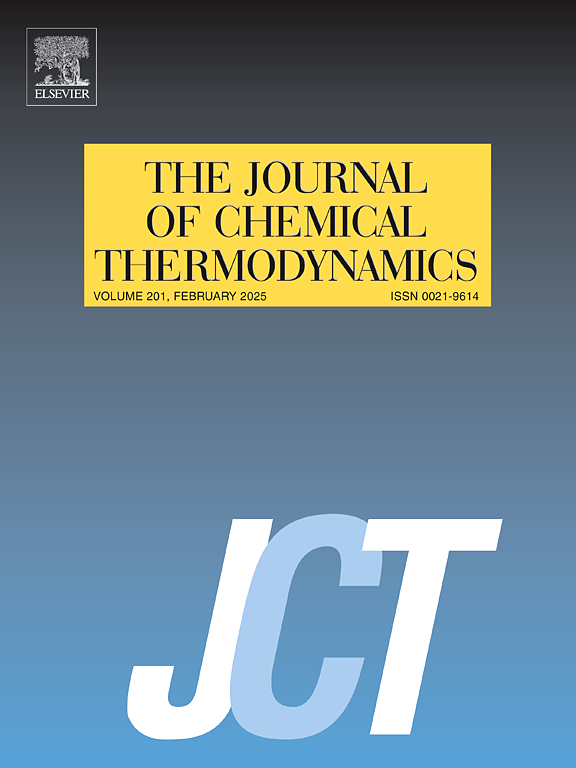常压下液态聚氧二甲基醚(OMEx)的等压热容
IF 2.2
3区 工程技术
Q3 CHEMISTRY, PHYSICAL
引用次数: 0
摘要
聚氧二甲基醚(OMEx)通常被认为是一种很有前途的柴油替代品。然而,为了各自技术的发展,需要对它们的热物理性质有充分的了解。在248k ~ 390k的环境压力下,对链长x = 1 ~ 5的五种OMEx进行了等压热容测量。它们是:2,4-二氧五戊烷(OME1), 2,4,6-三氧庚烷(OME2), 2,4,6,8-四氧十一烷(OME3), 2,4,6,8,10-五氧十一烷(OME4)和2,4,6,8,10,12-六氧三癸烷(OME5)。为了验证所采用的仪器和测量程序,还对水、甲醇和乙醇进行了采样。采用Setaram差示扫描量热仪μDSC进行测量,总体相对扩展(k=2)不确定度Ur(cp)为±1%。用温度的多项式方程拟合了测量数据。与文献数据进行了广泛的比较。本文章由计算机程序翻译,如有差异,请以英文原文为准。
Isobaric heat capacity of liquid polyoxymethylene dimethyl ethers (OMEx) under ambient pressure
Polyoxymethylene dimethyl ethers (OME) are frequently considered as a promising alternative to diesel fuel. However, for the development of the respective technology, a sound knowledge about their thermophysical properties is required. Isobaric heat capacity measurements of five OME with a chain length = 1 to 5 are conducted under ambient pressure in the temperature range from about 248 K to 390 K. These are: 2,4-Dioxapentane (OME), 2,4,6-Trioxaheptane (OME), 2,4,6,8-Tetraoxanonane (OME), 2,4,6,8,10-Pentaoxaundecane (OME) and 2,4,6,8,10,12-Hexaoxatridecane (OME). To validate the employed apparatus and measurement procedure, water, methanol and ethanol are sampled as well. The measurements are carried out with a differential scanning calorimeter DSC by Setaram with an overall relative expanded () uncertainty of 1%. Polynomial equations in terms of temperature are fitted to the measured data. An extensive comparison to literature data is made.
求助全文
通过发布文献求助,成功后即可免费获取论文全文。
去求助
来源期刊

Journal of Chemical Thermodynamics
工程技术-热力学
CiteScore
5.60
自引率
15.40%
发文量
199
审稿时长
79 days
期刊介绍:
The Journal of Chemical Thermodynamics exists primarily for dissemination of significant new knowledge in experimental equilibrium thermodynamics and transport properties of chemical systems. The defining attributes of The Journal are the quality and relevance of the papers published.
The Journal publishes work relating to gases, liquids, solids, polymers, mixtures, solutions and interfaces. Studies on systems with variability, such as biological or bio-based materials, gas hydrates, among others, will also be considered provided these are well characterized and reproducible where possible. Experimental methods should be described in sufficient detail to allow critical assessment of the accuracy claimed.
Authors are encouraged to provide physical or chemical interpretations of the results. Articles can contain modelling sections providing representations of data or molecular insights into the properties or transformations studied. Theoretical papers on chemical thermodynamics using molecular theory or modelling are also considered.
The Journal welcomes review articles in the field of chemical thermodynamics but prospective authors should first consult one of the Editors concerning the suitability of the proposed review.
Contributions of a routine nature or reporting on uncharacterised materials are not accepted.
 求助内容:
求助内容: 应助结果提醒方式:
应助结果提醒方式:


